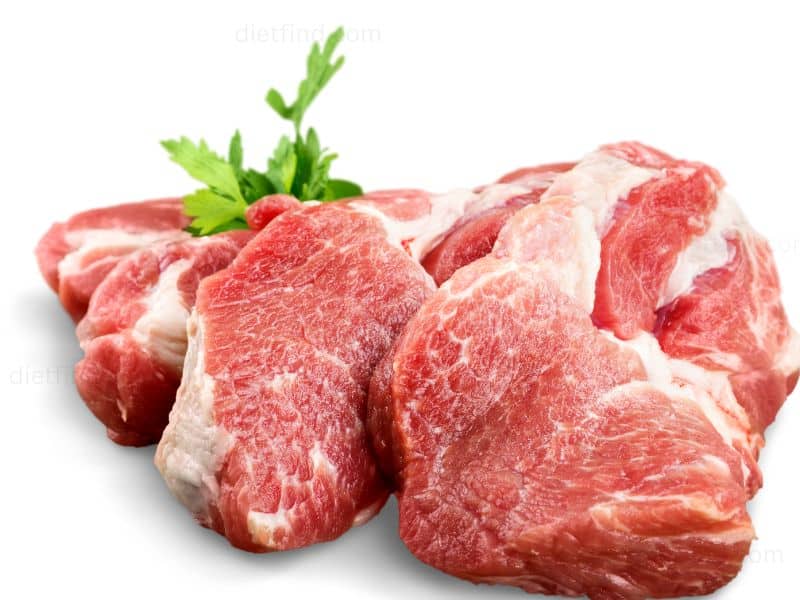Introduction to Dr. Gundry’s Plant Paradox Diet
Dr. Gundry’s Plant Paradox diet is a topic that has caught the interest of many in the nutrition and weight loss community. The diet plan is based on the principle that lectins, proteins found in various common foods, contribute to ailments like obesity, inflammation, and autoimmune diseases.
By avoiding foods rich in lectins, such as wheat, beans, potatoes, nuts, and dairy, proponents of this diet believe they can pave the way to better health. Lectins are a type of protein found in a wide variety of organisms, including many plants, and they have the ability to bind specifically to carbohydrates. This carbohydrate-binding property plays a role in various biological processes, such as cellular signaling and host-pathogen interactions. In the context of Dr. Gundry’s Plant Paradox diet, lectins are viewed as potentially harmful to human health. The diet posits that lectins may disrupt the absorption of nutrients, contribute to gut inflammation, and be linked to autoimmune disorders and other chronic health conditions.
Consequently, Dr. Gundry’s diet emphasizes avoiding foods rich in lectins, such as grains, legumes, and nightshade vegetables. It’s important to note that while some argue that lectins can be harmful, especially when consumed in large amounts or from raw or improperly cooked foods, many experts in the field of nutrition regard lectins as generally harmless for most people when consumed as part of a typical balanced diet.
Let’s explore the pros and cons of Dr. Gundry’s diet.
Pros of the Plant Paradox Diet
Emphasis on Whole Foods
One notable advantage of Dr. Gundry’s diet is the elimination of processed foods. By encouraging followers to focus on whole foods, produced healthily and packed with maximum nutrients, the diet supports a path to better overall health. It’s a push towards unprocessed, natural food sources that help cleanse the body from potential toxins in processed products.
This focus on fresh, natural ingredients often leads to feeling revitalized and an overall improvement in health. People looking to escape the trap of processed foods might find this aspect of the diet appealing.
A Rich Source of Protein and Healthy Fats
Dr. Gundry’s diet emphasizes rich protein and healthy fats. This composition may enhance feelings of fullness, making it easier for followers to maintain a calorie deficit, which is essential for weight loss. By leaning towards these nutrient-dense options, many find a satisfying way to keep hunger at bay.
Potential for Weight Loss
The diet’s structure, rich in protein and healthy fats, naturally lends itself to feelings of satiety. For those struggling with weight loss, this approach could make it easier to stick to a calorie deficit without feeling deprived. It taps into the body’s natural hunger cues, facilitating a smoother weight loss journey.
Cons of the Plant Paradox Diet
Lack of Scientific Support
Despite the intriguing concepts, there’s little to no research that backs up Dr. Gundry’s claims. The belief that avoiding lectins leads to improved health lacks robust scientific evidence. It leaves a gap in our understanding and raises questions about the validity of the diet’s core principles. Many nutrition experts question the diet’s effectiveness and worry about potential long-term impacts.
Nutrient Deficiencies and Restrictiveness
The Plant Paradox diet cuts out foods often considered healthy, like whole grains and legumes. Such restrictions can lead to nutrient deficiencies, creating potential health risks. The diet’s restrictiveness can also make it difficult to follow in the long term. It’s a challenge many face when trying to balance variety with the stringent guidelines of Dr. Gundry’s approach.
Challenges in Maintaining Variety
Eliminating entire food groups from the diet can make it tough to get enough diversity in your meals. Variety is not just the spice of life; it’s vital for obtaining a broad spectrum of nutrients. Dr. Gundry’s diet may leave followers struggling to find alternatives that fit within the plan’s boundaries, potentially causing frustration and difficulties in adhering to the diet. These food groups are rich in essential nutrients like fiber and vitamins, and their absence could pose health risks over time.
Difficulty in Sustaining the Diet
Dr. Gundry’s diet is not for the faint of heart. Its restrictive nature requires careful planning and can be a hurdle for those looking for a more flexible eating plan. The challenge of sustaining such a strict regimen could lead to burnout or failure to adhere to the diet.
The Wider Perspective
Dr. Gundry’s Plant Paradox diet presents an interesting paradigm in the nutrition landscape. Its innovative approach to eliminating lectins may resonate with some, but the lack of scientific backing and the restrictive nature might deter others. As with any diet plan, it’s crucial for individuals to assess their unique needs and consult with healthcare professionals to determine if this is the right path for them.
The interest in Dr. Gundry’s diet is a testament to the ongoing quest for new avenues in nutrition and weight loss. However, it also highlights the importance of critical examination and personalized assessment to ensure that a particular diet aligns with an individual’s health goals and nutritional needs.
Foods to Eat in Dr. Gundry’s Diet
1. Leafy Greens
Dr. Gundry’s diet promotes the consumption of various leafy greens like spinach, kale, and Swiss chard. These nutrient-dense vegetables align with the diet’s goal of maximizing nutrients without harmful lectins.
2. Cruciferous Vegetables
Broccoli, cauliflower, Brussels sprouts, and other cruciferous vegetables are allowed. They offer essential vitamins and minerals, supporting overall wellness.
3. Healthy Fats
Sources of healthy fats, such as avocados, olive oil, and certain fish like salmon, align with the diet’s principles and are encouraged.
4. Pasture-Raised Meats
Lean, pasture-raised meats are part of the diet, provided they are not fed with lectin-containing grains.
5. In-season Fruits
Fruits that are in season, particularly berries, may be included but in moderation due to sugar content.

Foods to Avoid in Dr. Gundry’s Diet
1. Lectin-rich Foods
Foods that contain lectins, like wheat, beans, potatoes, nuts, and dairy, are the core items to avoid in Dr. Gundry’s diet.
2. Certain Fruits & Vegetables
Some fruits and vegetables, such as tomatoes, cucumbers, and peppers, which contain specific types of lectins, are restricted.
3. Processed and Packaged Foods
Processed foods, refined sugars, and artificial additives are off-limits, as they often contain hidden lectins or other ingredients that conflict with the diet’s philosophy.
4. Grain-fed Meats
Meats from animals fed with grains containing lectins are to be avoided. The diet emphasizes the importance of the animal’s diet in determining the quality of the meat.
Final Thoughts on Food Choices
Dr. Gundry’s diet offers an exciting framework for eating, with its unique focus on avoiding lectins. By emphasizing whole foods and steering clear of certain food groups, it presents a distinctive approach to nutrition that resonates with some followers. However, the exclusion of certain nutritious foods, such as whole grains and legumes, might be seen as a drawback by others. Those considering this diet should carefully evaluate these food choices in the context of their individual health needs and consult with a healthcare professional to ensure it aligns with their overall wellness goals.
Tomatoes and Nightshades in Dr. Gundry’s Diet
The Issue with Nightshades
Dr. Gundry’s Plant Paradox diet classifies tomatoes, along with other nightshade fruits and vegetables like eggplants, peppers, and potatoes, as foods to avoid. The main reason for this restriction is their lectin content.
Lectins in Nightshades
Nightshade plants contain a type of lectin that, according to Dr. Gundry’s theory, may contribute to inflammation and other health issues. These lectins are part of the plant’s defense mechanisms against insects and fungi, but Dr. Gundry argues that they can be harmful when consumed by humans.
Specific Concerns about Tomatoes
Tomatoes, a popular nightshade, are singled out by Dr. Gundry because of the presence of a specific lectin known as “tomato lectin.” This lectin might be resistant to digestion, and there are claims that it could negatively affect the gut lining.
Peeling and De-Seeding
Interestingly, Dr. Gundry suggests that if someone insists on including tomatoes in their diet, they should peel and de-seed them. The majority of the lectins in tomatoes are found in the skin and seeds, so removing them might reduce the potential adverse effects.

A Controversial Perspective
It’s essential to note that the exclusion of nightshades, including tomatoes, based on lectin content is highly specific to Dr. Gundry’s diet and is not a universally accepted idea in the nutrition community. Many nutrition experts argue that the levels of lectins found in these foods are not harmful to most people and that cooking can neutralize many of these proteins.
Dr. Gundry’s perspective on tomatoes and other nightshades illustrates the distinctive nature of his dietary approach, emphasizing whole foods and the avoidance of certain plant compounds. While this approach resonates with some followers, others may find the exclusion of commonly enjoyed and nutritious foods like tomatoes a challenging aspect of the diet.
Butyrates in Dr. Gundry’s Approach
Emphasis on Gut Health
Dr. Gundry’s focus on gut health leads him to acknowledge the importance of butyrates. These compounds are known to nourish the cells lining the colon and help maintain the integrity of the gut barrier. They can support digestive health and reduce inflammation.
Promotion of Foods that Produce Butyrates
Although Dr. Gundry’s diet restricts many sources of complex carbohydrates, such as grains and legumes due to lectins, he still encourages the consumption of specific foods that promote the production of butyrates. This includes vegetables rich in fibers and resistant starches that friendly gut bacteria can ferment into butyric acid.
Foods that Promote the Production of Butyrates
1. Resistant Starches
Resistant starches resist digestion in the small intestine and travel to the colon, where gut bacteria ferment them into butyric acid. Foods high in resistant starch include:
- Green bananas
- Cooked and cooled potatoes (within Dr. Gundry’s diet, regular potatoes would be avoided, but resistant starches can be found in other allowed sources)
- Whole grains (note: most whole grains would be avoided in Dr. Gundry’s diet, but alternatives like millet might be acceptable)
2. Fiber-Rich Vegetables
Fiber is key to butyrate production, as it’s fermented by gut bacteria into short-chain fatty acids. Within Dr. Gundry’s diet, the following fiber-rich vegetables are encouraged:
- Leafy greens like spinach and kale
- Cruciferous vegetables such as broccoli and Brussels sprouts
3. Prebiotic Foods
Prebiotic foods contain non-digestible fibers that feed beneficial gut bacteria, leading to butyrate production. Good choices include:
- Garlic
- Onions
- Leeks
- Chicory root
Considerations in Dr. Gundry’s Diet
Dr. Gundry’s specific focus on avoiding lectins can make sourcing butyrate-producing foods a bit more complex. While many common sources might be restricted, a careful selection of fiber-rich vegetables, approved grains, and prebiotic foods can still support gut health.
Individuals following Dr. Gundry’s approach may need to carefully plan their diet to ensure they are incorporating these butyrate-producing foods without conflicting with the diet’s primary principles. As always, personal needs and preferences, along with guidance from healthcare professionals, can ensure that the diet aligns with overall health goals.
Balance with Lectin Avoidance
The challenge in Dr. Gundry’s approach is to strike a balance between avoiding lectins and still promoting gut health through the production of butyrates. Since some familiar sources of butyrates are restricted in his diet, followers may need to pay extra attention to include alternatives that support gut microbiota without conflicting with the diet’s principles.
The Wider Context
While Dr. Gundry recognizes the value of butyrates, it’s essential to note that his restrictive approach to certain foods may limit some conventional sources of butyrates. Those interested in following his dietary plan may benefit from consulting with a healthcare or nutrition professional to ensure they are supporting gut health in alignment with his dietary guidelines.
The emphasis on butyrates within Dr. Gundry’s dietary philosophy underscores the interconnectedness of food choices, gut health, and overall wellness. It showcases a growing awareness of the gut’s role in health and adds a layer of complexity to navigating diet choices, particularly within the unique framework of Dr. Gundry’s Plant Paradox diet.
Conclusion
Dr. Gundry’s Plant Paradox diet offers a unique and often controversial approach to nutrition and wellness. Grounded in the belief that lectins in certain foods may contribute to chronic health conditions, the diet proposes a regimen that emphasizes whole foods while strictly avoiding lectin-rich products.
From eliminating nightshades like tomatoes due to specific lectin content to recognizing the importance of butyrates for gut health, Dr. Gundry’s diet is a complex and carefully constructed plan. The pros, such as a shift towards whole foods and potential weight loss, are balanced by cons, including limited research support and potentially restrictive nature.
While some find value in Dr. Gundry’s principles and appreciate the focus on gut health and nutrient-dense foods, others may struggle with the exclusion of seemingly healthy foods like whole grains and legumes. As with any diet, individual needs, preferences, and consultation with healthcare professionals will be paramount in determining whether Dr. Gundry’s approach aligns with one’s health goals and nutritional requirements.
In the evolving landscape of nutrition, where new theories and diets regularly emerge, Dr. Gundry’s Plant Paradox diet stands as a distinctive voice. It serves as both an inspiration to some and a point of debate for others, reflecting the multifaceted and ever-changing nature of dietary science and personal health.
References:
Nutritiouslife 1. Is The Gundry Diet Healthy? – Nutritious Life
Pros and Cons. The main benefit of the Gundry Diet is that it eliminates processed foods and has followers focus on whole foods that are produced in healthy ways and result in maximum nutrients—like in-season produce and grass-fed beef. But there are many downsides. There is little to no research that backs up Dr.
Webmd 2. What to Know About the Plant Paradox Diet
Here’s what to know about the pros and cons of the plant paradox diet. What Is the Plant Paradox Diet? The diet calls for avoiding foods with high amounts of …
Everydayhealth 3. Lectin-Free Diet: Benefits, Risks, Food Choices, and More
Dr. Steven Gundry, author of ‘The Plant Paradox,’ popularized the lectin-free diet, which calls for eliminating beans, legumes, lentils, …
Verywellfit 4. The Lectin-Free Diet: Pros, Cons, and What You Can Eat
Phase One: A three-day “cleanse” eliminates almost everything but a handful of vegetables.
Healthline 5. What Is the Plant Paradox Diet, and Does It Work?
According to Dr. Gundry’s website, the detox program involves a strict lectin-free diet for 3 days, plus a daily regimen of light exercise …
Purewow 6. The Gundry Diet Is Trending. But Does It Actually Work?
“The benefits of eating whole grains and vegetables, which provide vitamins, minerals, and fiber, significantly outweigh the risk that a small …
© 2023 by DietFind.com. All rights reserved. No part of this document may be reproduced or transmitted in any form or by any means, electronic, mechanical, photocopying, recording, or otherwise, without prior written permission of DietFind.com.

